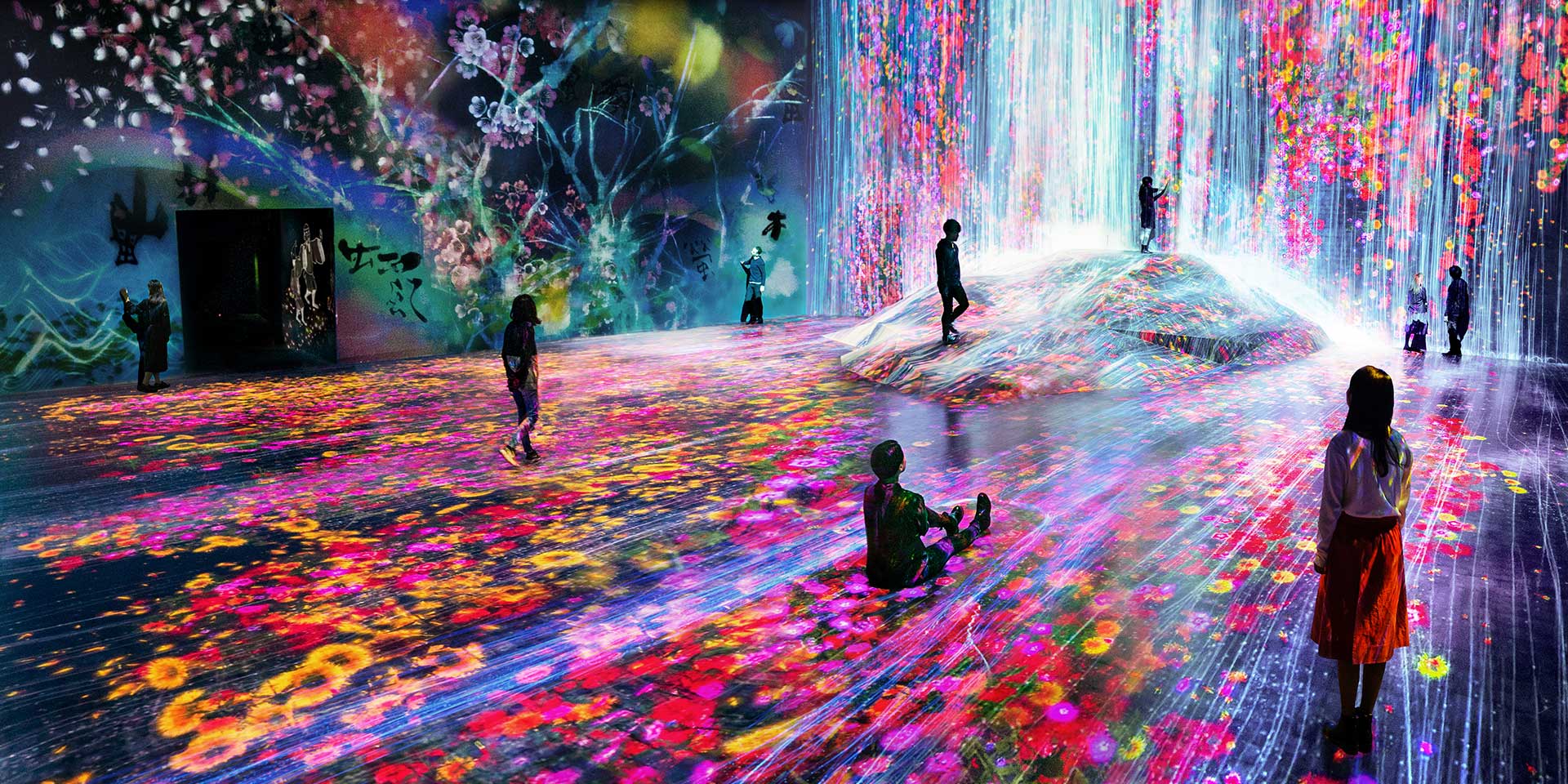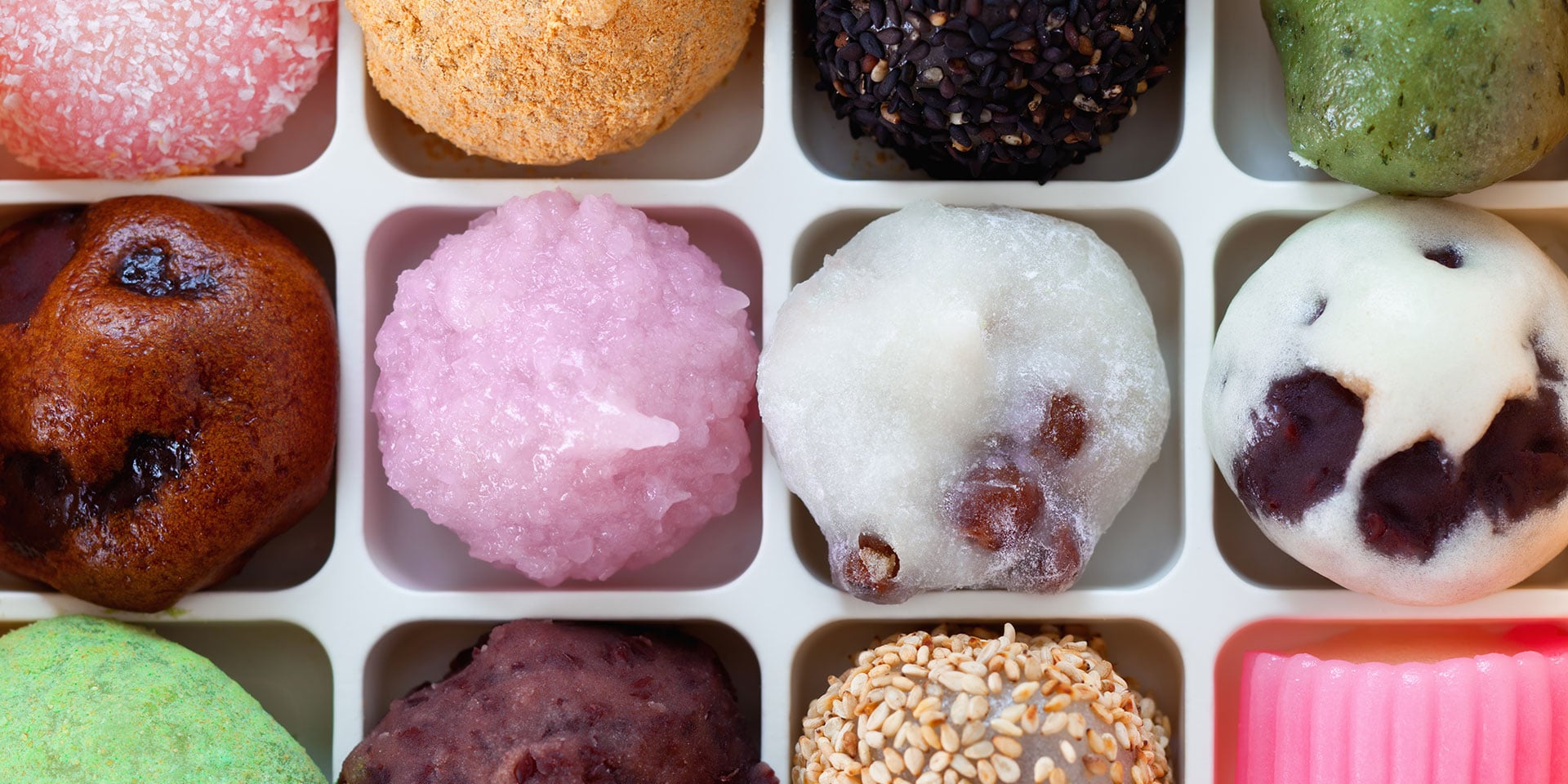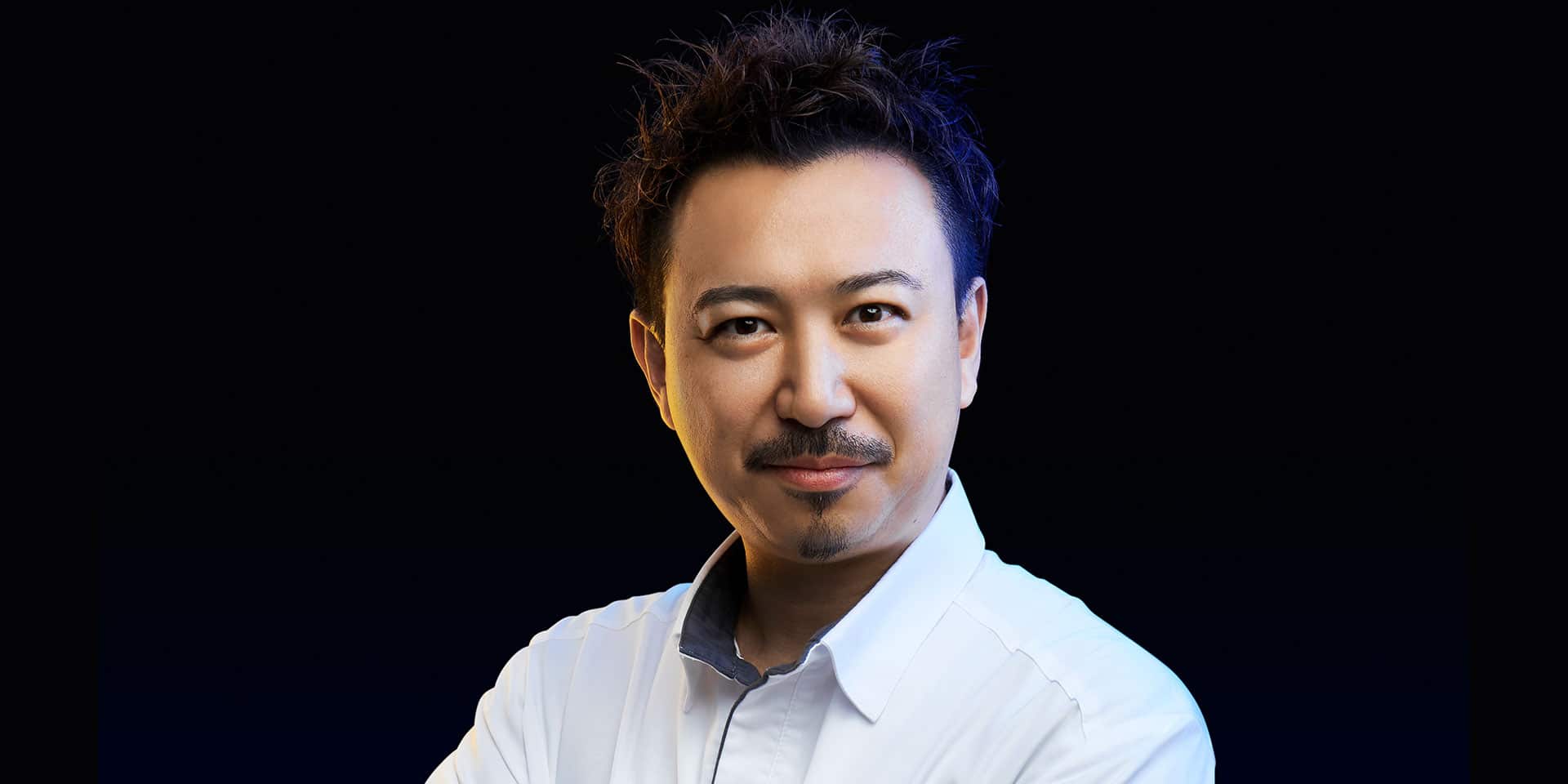
Chef Shintaro Miyazaki of Azure45 in Tokyo. (Photo: Marriott Bonvoy Traveler)
TokyoMichelin-Starred Chef Shintaro Miyazaki Whips Up French Cuisine with Japanese Sensibility
By Christian RazukasShintaro Miyazaki is proud when talking about the Michelin star that he’s garnered as chef de cuisine at Azure 45, The Ritz-Carlton, Tokyo’s signature French restaurant.
“These days, the Michelin-starred French hotel restaurants in Tokyo all have French consultants,” he says. “Azure 45 is the only hotel restaurant that has earned its star without relying on famous foreign chefs.”
Starting as a pâtissier in Greater Tokyo, Chef Miya reinvented himself — at the age of 29 — as a fine dining stager at top French restaurants in Paris. He thrives on such kitchen pressures: Chef Miya earned his previous restaurant, Au Gout du Jour, Michelin stars for seven consecutive years, while his road to culinary school was paved by the showdowns on the “Iron Chef” TV series.
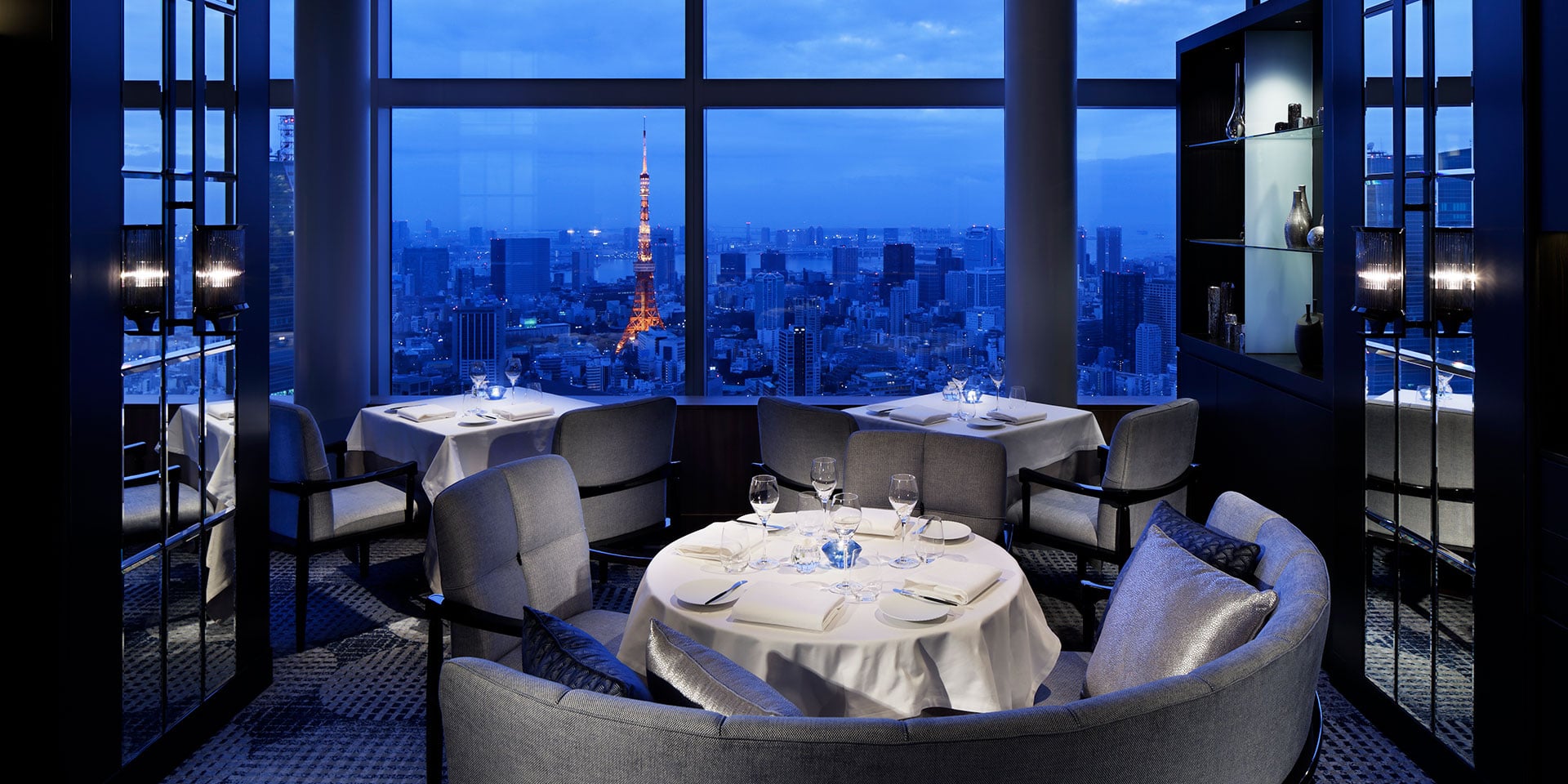
At Azure 45, which he has led from its inception in 2014, Chef Miya’s East-meets-West take on cuisine meets steep competition from views of Tokyo Tower. Marriott Bonvoy Traveler spoke with Chef Miya.
The following interview has been edited for length and clarity.
People have distinct notions about French cuisine and Japanese chefs. How do you exceed their expectations?
Traditional French cuisine focuses on gorgeous presentation and tastes that are “immediately delicious,” which means dishes have a strong flavor, while Japanese cuisine is defined by simple presentation and a “deeply delicious” taste, meaning that the flavors and savory umami sensations explode slowly in your mouth.
My cuisine has a beautiful and flashy look, and features sauces, so guests recognize that it’s French. Yet the tastes are delicately finished, so I would say my style is “French cuisine that a Japanese chef sends to the world.”
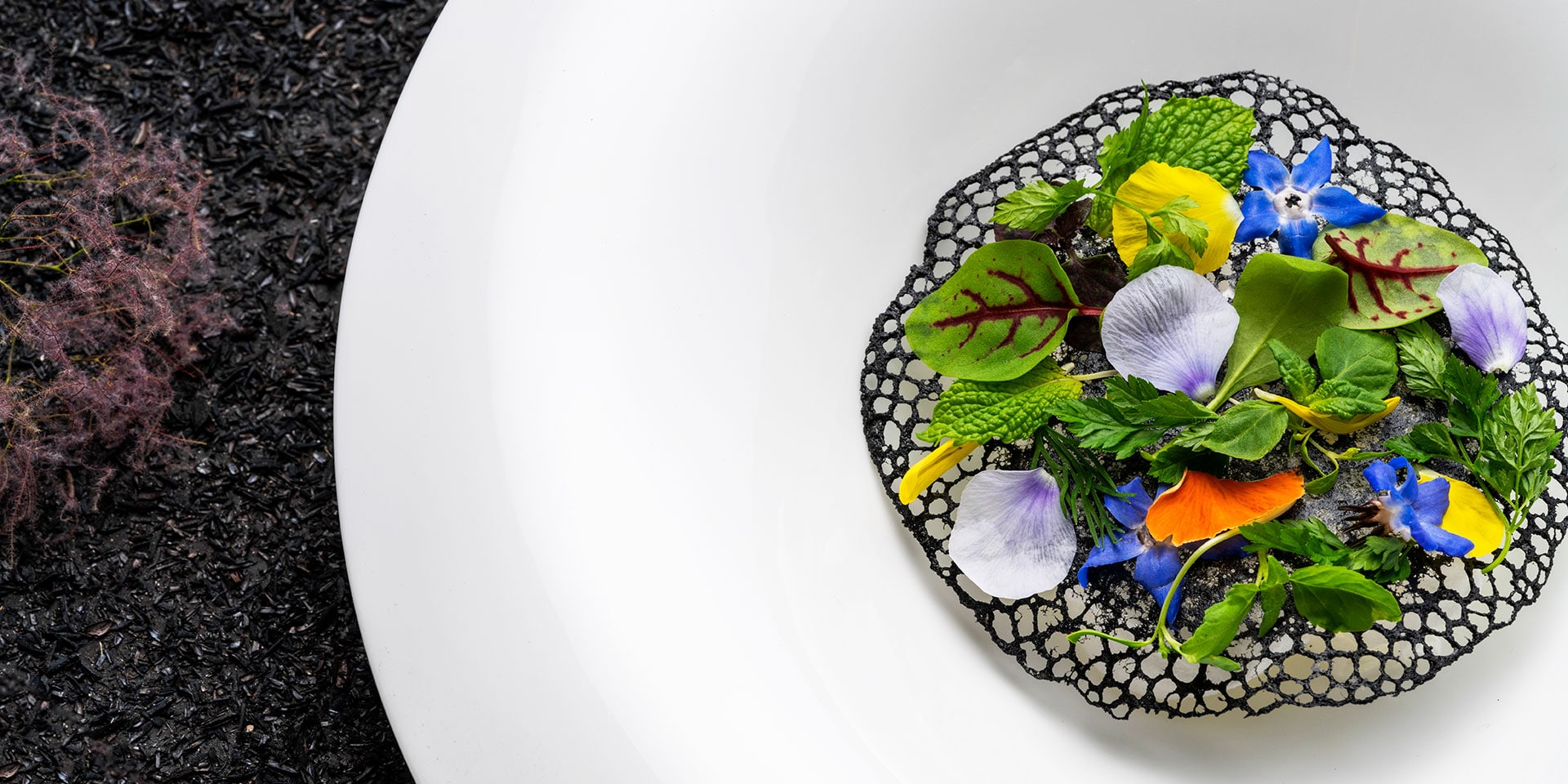
Tokyo boasts a staggering 64 Michelin-starred French fine dining venues. How do you keep up with the competition?
There are so many wonderful restaurants here in Tokyo, so receiving Michelin stars here is the most precious thing in the world.
I have had the opportunity to be tested by the guests who return — many times — to Azure 45. But no matter how delicious your creations are, a chef can’t always do the same thing.
I focus on presentation and originality as much as possible, so guests realize that “this is a special dish, made only for me.” If a chef can’t do that much, they’ll be buried immediately, or in three to five years.
How are you adapting to emerging trends, like farm-to-fork dining, given how far Tokyo is from French farmers, fishmongers and butchers?
Japan has a lot of great ingredients — but not too many “great” restaurants. So in order to survive here, I’m motivated to make an original menu every day. I regularly meet farmers to find the best ingredients for my dishes.
Since some of these ingredients are short-lived, we have them on the omakase [which roughly translates as “let the chef choose”] course on our grand menu, so delicious ingredients with brief growing seasons can be experienced.
When I can find the best vegetables and seafood in Japan, I use them. We are proud to have the finest wagyu beef. Some other things, like lobster, are wonderful ingredients that I cannot find in Japan; thus, I use European sources. I believe in using what I find to be the best.
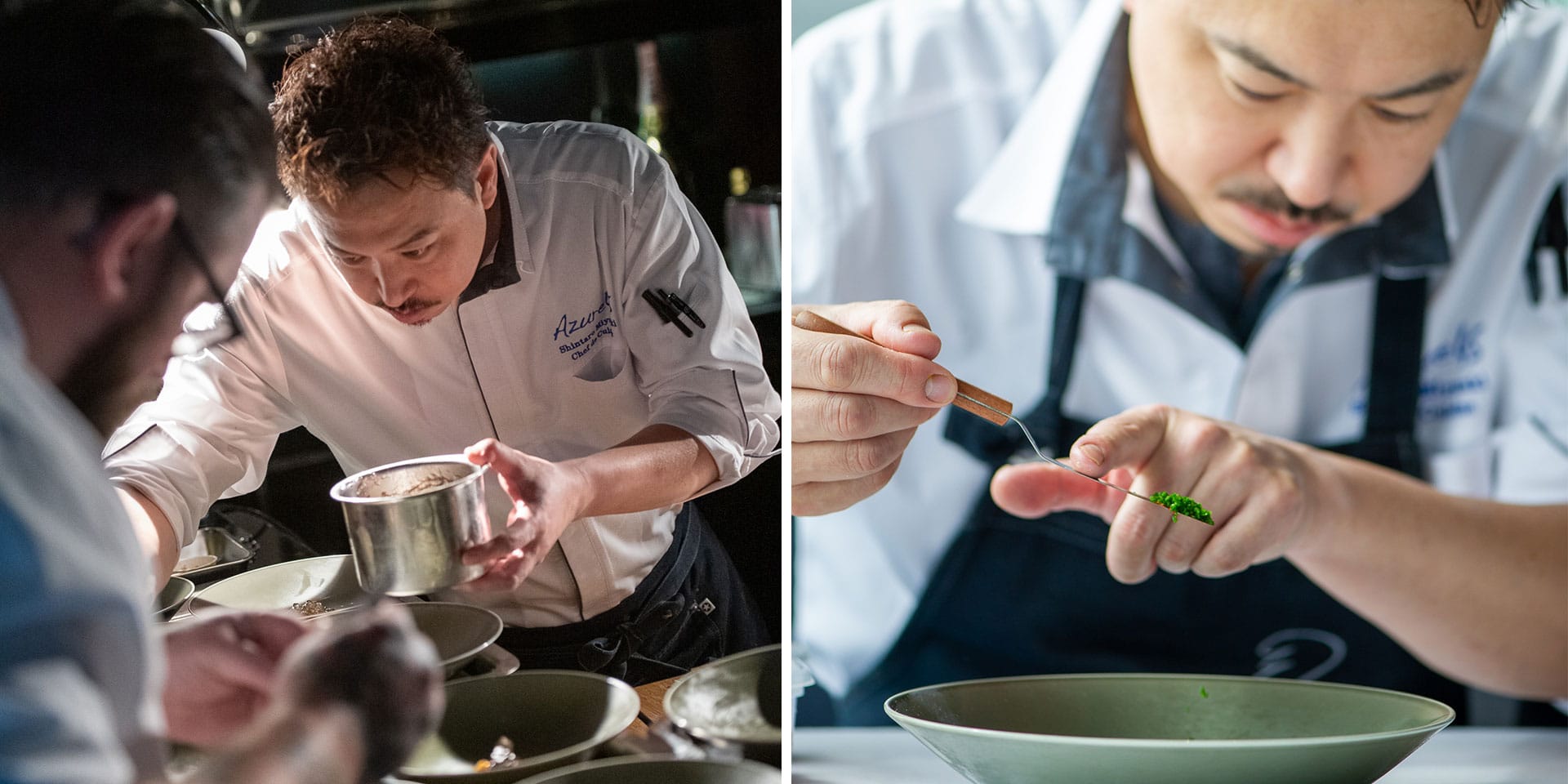
How should a traveler change their mindset to encounter Japanese cuisine on its own terms?
We Japanese enjoy the scents and express our seasons on the plate — and we combine the yakumi herbs [chopped, sliced or grated vegetables, seeds or roots, like ginger or scallions] to bring out the taste of the ingredients from a dish that may look simple.
The basic flavor profile of Japanese cuisine includes bonito flakes [aka katsuobushi, or dried skipjack tuna], miso and soy sauce — but there is fusion going on with Japanese dishes like sashimi, tempura and barbecue, with a well-mixed sourness and aroma combing from ginger, soba, large leaves and plums.
I want guests to taste and find that real wasabi is not spicy — and the quality of our noodle restaurants, those serving ramen, soba and udon, is very high.
What are the memories — food, travel or otherwise — that you’ve preserved after your time in France?
Going to work by bicycle in Paris and watching the scenery pass by. Looking at the urban landscape of Colmar, in Alsace. When I visit Alsace and Champagne, I make sure to eat the local delicacies.
Also, dining at Restaurant le Meurice in Paris, when it was under Yannick Alléno, who is now the chef patron of Alléno Paris au Pavillon Ledoyen. I visit France once every five years or so. I usually go to Paris to check on trends and sample new chefs.
What’s a food experience that you treasure?
When I first received a Michelin star about 10 years ago, I’d been regularly visiting French or Italian restaurants. Then I visited a Japanese place, Nihonryori RyuGin [a three-Michelin-star Japanese fusion venue under Seiji Yamamoto that’s been ranked 20th by World’s Best 50 Restaurants].
It was the first time I was brought to tears by a dish. What impressed me were the tastes, a sense of surprise — and a hope that I might be able to reach such heights if I worked hard. I felt that I was happy to have a wonderful job as a chef.
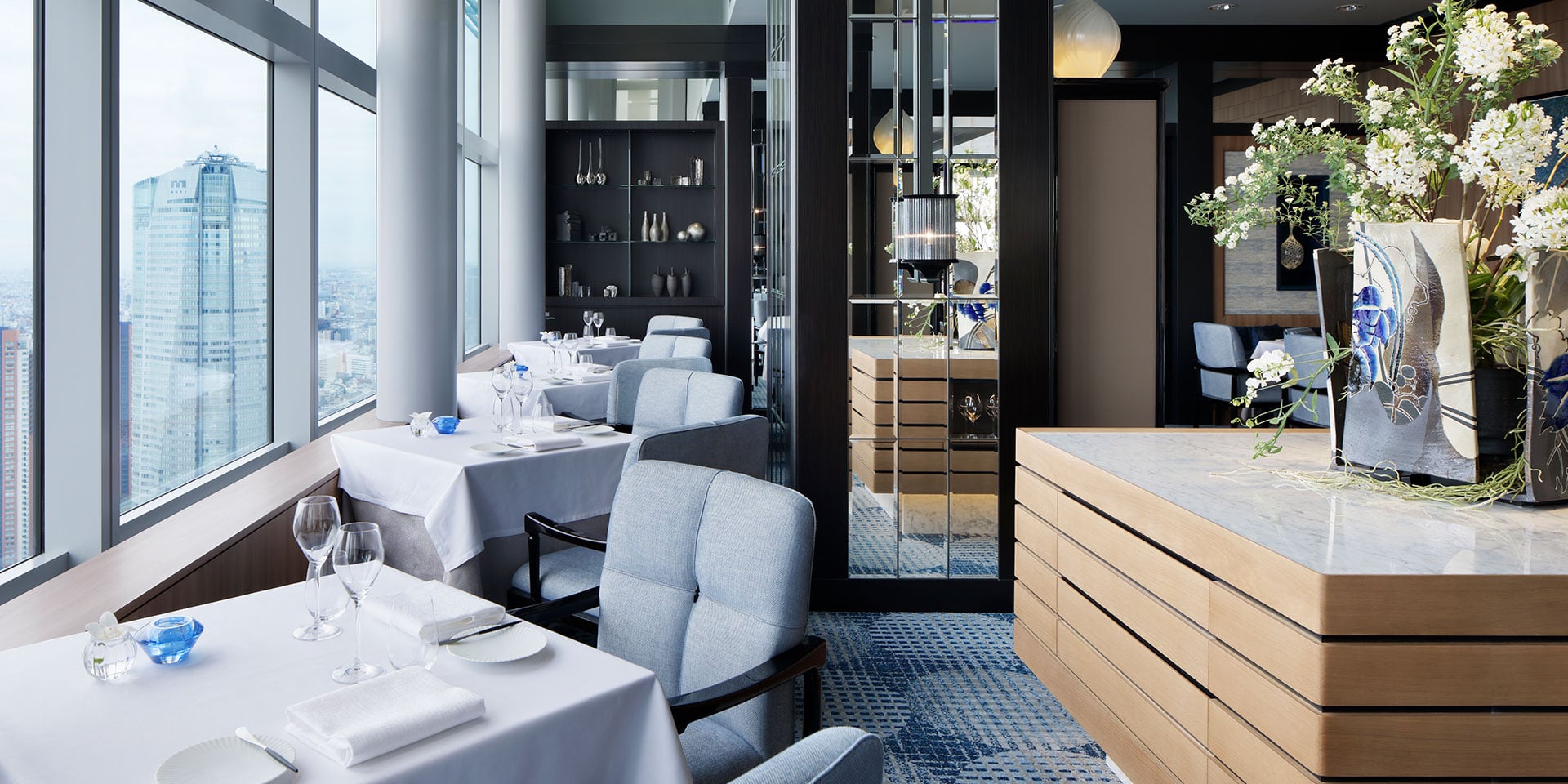
What would be your suggested itinerary for a traveler wanting to tour the Tokyo restaurant scene?
Over the last few years, there’s been a wave of smallish Spanish bars where people enjoy drinks while standing, along with delicious snacks and meals. Natural wines are also very popular these days, so I would like to introduce guests to the bistros and brasseries in Tokyo serving these wines.
If you weren’t a chef, what would you be doing with your life?
I can’t think of anything — but if I had to say, I would rather be eating delicious cuisine instead of making it!
Say that you’ve been given a business jet and carte blanche with the bookers at the world’s best restaurants. Which place would be first on your list?
Mirazur in Menton in France. It received three Michelin stars and was ranked No. 1 by the World’s 50 Best Restaurants in 2018.





